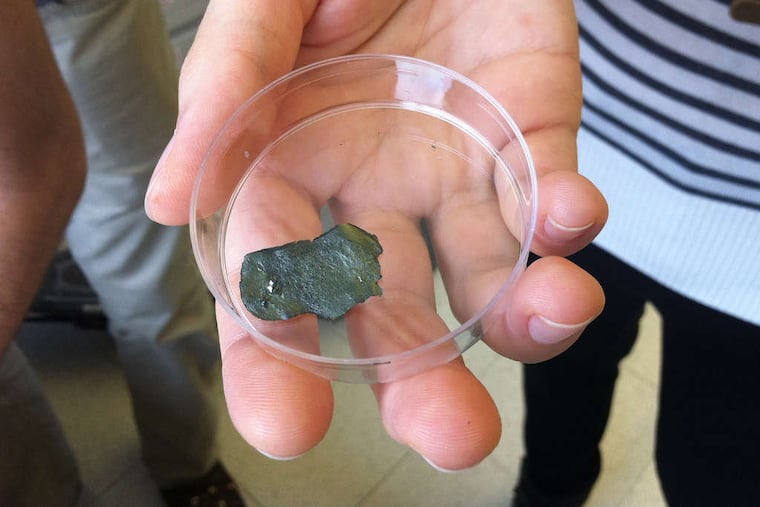At Drexel, clay-like substance could be battery of future
Dust off your high-school physics knowledge for a moment, and recall the difference between batteries and capacitors. The former can store a lot of energy but take a long time to charge, while capacitors have more limited storage but can be charged in seconds.

Dust off your high-school physics knowledge for a moment, and recall the difference between batteries and capacitors. The former can store a lot of energy but take a long time to charge, while capacitors have more limited storage but can be charged in seconds.
Lately, engineers have been developing devices that combine the best attributes of both: so-called supercapacitors that charge quickly and have improved storage capacity - some of which have been in use for several years in China, in fast-charging public buses.
Now, Drexel University engineers report they have developed a flexible material that could be used in next-generation "supercaps." Though moldable, like clay, the odd new substance is conductive like metal, the researchers write in Thursday's issue of the journal Nature.
And, like some of the best scientific discoveries, it was developed by accident.
This titanium carbide "clay" already rivals the energy-storage capacity of the carbon electrodes now used in supercaps, and the Drexel team is only just starting to optimize it, engineering professor Yuri Gogotsi said.
"There is plenty of room for improvement," said Gogotsi, one of the study's senior authors. "We are just in the beginning of an era."
Currently, the best supercaps can store just one-tenth the energy of batteries, but their advantages are hard to ignore. In addition to their ability to charge quickly, supercaps or "ultracaps" can be recharged tens of thousands of times without wearing out.
The buses in China have a range of just 15 to 20 miles but can be recharged in minutes at bus stations, said Dan Ye, executive director of Sinautec Automobile Technologies in Arlington, Va., which developed the vehicles with a Chinese partner.
Supercaps might also be useful in the "Internet of things" - deployed as power sources to operate myriad small wireless devices in home, office, and industrial settings. They also can be used to supplement batteries, almost like a reserve gas tank for delivering short bursts of power for energy-intensive applications such as a camera flash, Gogotsi said.
Drexel's claylike substance belongs to a family of materials that Gogotsi and colleague Michel Barsoum discovered in 2011 and which they dubbed MXenes. A key attribute of these materials is that they are made of thousands of stacked wafer-thin sheets, providing lots of surface area for storing an electrical charge.
But the materials are difficult to make, requiring more than a day in a process that uses highly corrosive hydrofluoric acid.
Then, a year ago, Michael Ghidiu, a Drexel Ph.D. student in materials science engineering, asked Barsoum if he could try making the stuff with more benign materials. Sure, the professor said.
Ghidiu developed a safer method that used less-corrosive hydrochloric acid and a material called a fluoride salt. The material now takes less than an hour to make.
Then came the surprise. When he washed it off with water, it took on a malleable, flexible quality.
"That was really unexpected," Ghidiu said.
Maria R. Lukatskaya, a fellow doctoral student, then analyzed the material to determine its properties. Compared to titanium carbide made the old way, the claylike version had twice the capacity to store charge.
"We were very excited," she said.
Gogotsi said the flexible material can be rolled into film and should be readily adaptable in a manufacturing process. It would be used to make the electrodes in supercaps or even batteries - as the line between the two devices becomes increasingly blurry.
Jorge Santiago-Aviles, an associate professor of electrical and systems engineering at the University of Pennsylvania, predicted that years of work remain before the Drexel material could be commercialized, but said it seems very promising.
"Things are moving in the right direction," Santiago-Aviles said of the researchers' work. "It's a very strong group."
Ye, the executive director of the company with the Chinese buses, was more skeptical.
"Scientists and engineers talk very different languages," Ye said. "For me, who has a business background, my language is whether this thing will eventually make money. That is, by far, not certain."
The difference between batteries and supercaps is that batteries rely on a chemical reaction, whereas supercaps involve an electrostatic attraction between positive and negative charges - allowing greater speed.
But ultimately, both involve shuttling electrical charges back and forth - moving in one direction to use the energy, the other direction to recharge.
And if the Drexel researchers have their way, they might someday do it with clay.
215-854-2430